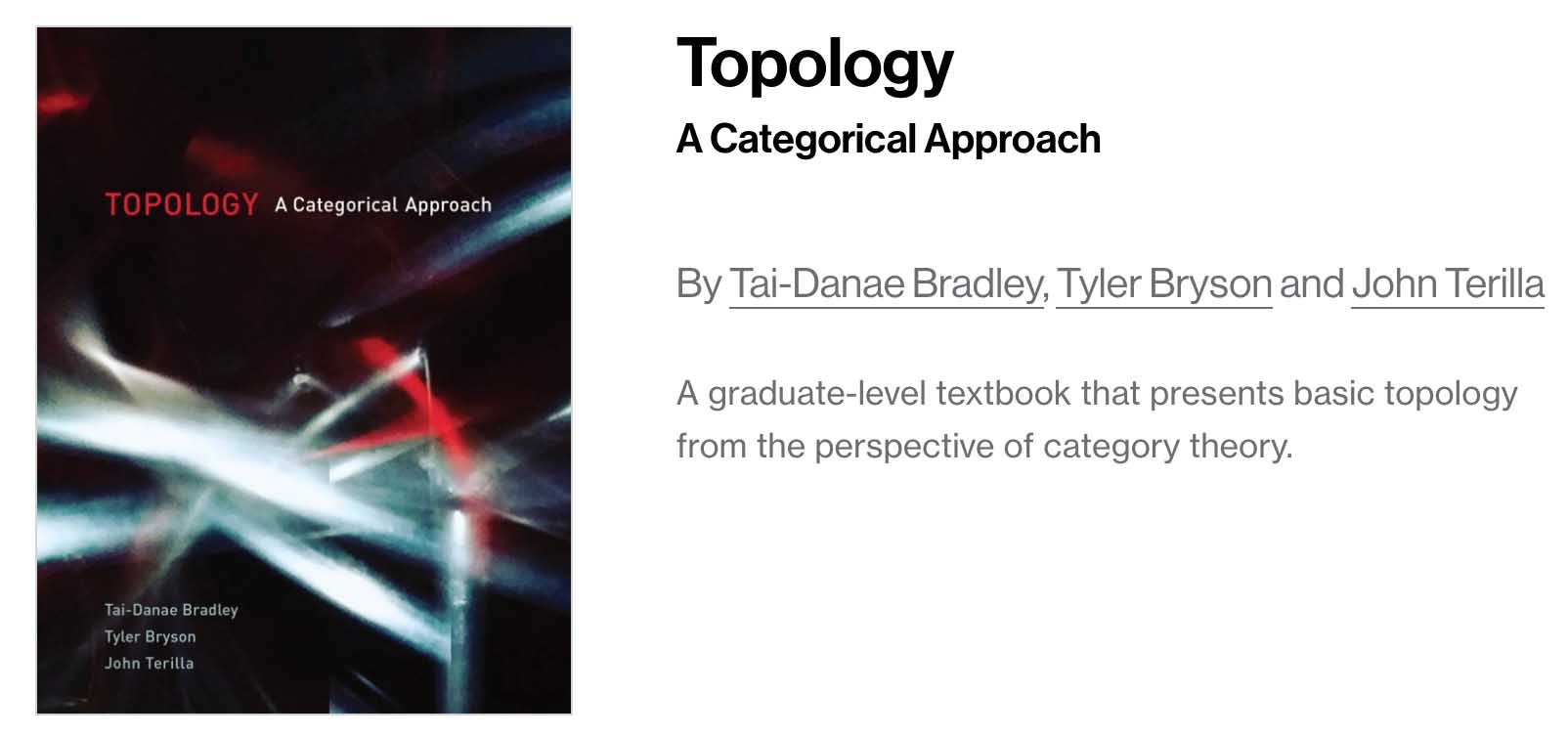April 2020
What's Next? (An Update)
Before introducing today's post, I'd like to first thank everyone who's reached out to me about my thesis and video posted last week. Thanks! I appreciate all the generous feedback. Now onto the topic of the day: I'd like to share an update about what's coming next, both for me and for the blog.
First, a word on the blog.
What's next for Math3ma?
I created Math3ma in early 2015 as an aid in transitioning from undergraduate-level to graduate-level mathematics. And it worked! The blog has been a sort of public math journal for more than five years, and I'm so glad I started it. My appreciation extends to all readers and to everyone who has contacted me through the site over the years. I'm always delighted to hear that the blog has been helpful for you, as well.

So since Math3ma has accomplished its purpose, my use for it will change. As you may have noticed already, I blog less frequently than I used to, and the content of my more recent articles is slightly different than the content in 2015--2017.
So what will happen to Math3ma going forward? I don't know, and I plan to be flexible about this. Of course I'll leave the website up, but going forward I plan to be flexible with how often I'll blog (not often, probably) and with what I'll blog about (my research, probably). I don't have any big plans for upcoming blog posts, so I may just take a break for a while. On the other hand, I do plan to post a paper or two on the arXiv in the near future, and I might decide to blog about it since I find sharing math irresistible.
See? Flexible.
At the Interface of Algebra and Statistics
I'm happy to share that I've successfully defended my PhD thesis, and my dissertation—"At the Interface of Algebra and Statistics"—is now available online at arXiv:2004.05631. In a few words,
my thesis uses basic tools from quantum physics to investigate mathematical structure that is both algebraic and statistical.
What do I mean? Well, the dissertation is about 130 pages long, which I realize is a lot to chew. So I made a 10-minute introductory video! It gives a brief tour of the paper and describes what I think is the quickest way to get a feel for what's inside.
Now, let me highlight an important point that I make in the video:
I wrote my dissertation with a wide audience in mind.
In particular, there is a great deal of exposition woven into the mathematics that provides intuition and motivation for the ideas. I’ve also sprinkled several “behind the scenes” snippets throughout, and alongside the propositions, lemmas, and corollaries there are Takeaways that summarize key ideas. Several of these key ideas are introduced through simple examples that are placed before—not after—the theory they're meant to illustrate. And in a happy turn of events, there is a low entrance fee for following the mathematics. The main tools are linear algebra and basic probability theory. And yes, there is some category theory, too!
Topology: A Categorical Approach
I've been collaborating on an exciting project for quite some time now, and today I'm happy to share it with you. There is a new topology book on the market! Topology: A Categorical Approach is a graduate-level textbook that presents basic topology from the modern perspective of category theory. Coauthored with Tyler Bryson and John Terilla, Topology is published through MIT Press and will be released on August 18, 2020. But you can pre-order on Amazon now!

Here is the book's official description:
This graduate-level textbook on topology takes a unique approach: it reintroduces basic, point-set topology from a more modern, categorical perspective. Many graduate students are familiar with the ideas of point-set topology and they are ready to learn something new about them. Teaching the subject using category theory—a contemporary branch of mathematics that provides a way to represent abstract concepts—both deepens students' understanding of elementary topology and lays a solid foundation for future work in advanced topics.
After presenting the basics of both category theory and topology, the book covers the universal properties of familiar constructions and three main topological properties—connectedness, Hausdorff, and compactness. It presents a fine-grained approach to convergence of sequences and filters; explores categorical limits and colimits, with examples; looks in detail at adjunctions in topology, particularly in mapping spaces; and examines additional adjunctions, presenting ideas from homotopy theory, the fundamental groupoid, and the Seifert van Kampen theorem. End-of-chapter exercises allow students to apply what they have learned. The book expertly guides students of topology through the important transition from undergraduate student with a solid background in analysis or point-set topology to graduate student preparing to work on contemporary problems in mathematics.
